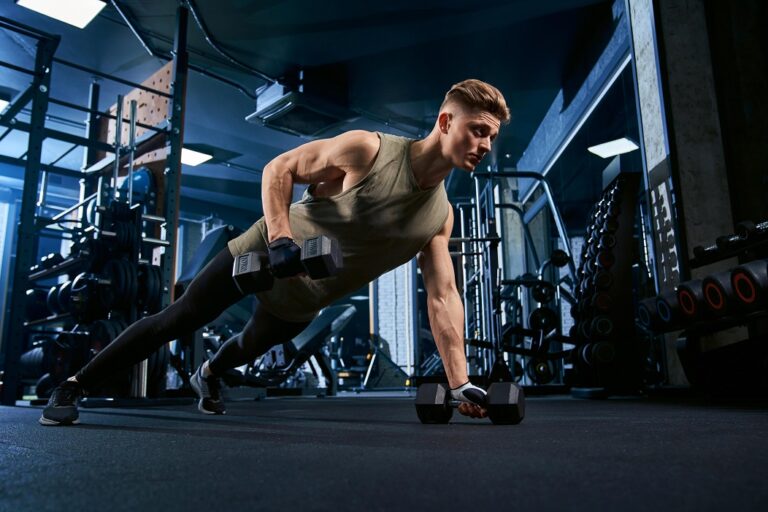
What Is Physical Fitness?
Physical fitness encompasses many factors, including flexibility, body composition, and endurance, but it boils down to having sufficient energy and physical strength to complete tasks.
Maintaining physical fitness may contribute to a better quality of life, lower blood pressure and overall longevity, and potentially decrease the risk of chronic diseases like heart disease and type 2 diabetes.
Three Different Types of Physical Fitness
Your body’s overall fitness consists of three parameters, and your fitness program should ideally reflect that to help you achieve full-body fitness.
1. Aerobic or Cardiovascular Fitness
Your body’s capacity to pump oxygenated blood through your blood vessels, mainly while participating in activities that boost your heart rate for an extended time, is known as aerobic fitness.
If you can perform cardio like swimming, running and biking for long stretches, you have a high level of aerobic fitness.
2. Muscle-Strengthening or Anaerobic Fitness
Anaerobic fitness is how much work your muscles can take on without needing rest and is reflected in your total muscle mass.
Strength training increases anaerobic fitness, so bench pressing beyond your body weight or performing many squats in a row can indicate your anaerobic fitness level.
3. Flexibility
Flexibility evaluates how much stretch your muscles have after exercise and exertion, which causes your muscles to shorten. You can improve your flexibility through regular flexibility and stretching exercises like yoga.
5 Components of Fitness
Holistic physical fitness breaks down along the following lines and incorporates many types of exercise to address all five components of physical fitness:
1. Body Composition
Body composition refers to your body’s overall fat content. While body mass index is a rough indication of fitness about body composition.
It also leaves out many factors that contribute to overall physical health and wellness. Consider your body fat levels as just a small component of your overall level of fitness.
2. Cardiovascular or Cardiorespiratory Endurance
How long your body can withstand physically hard aerobic exercise is measured by cardiovascular endurance. For example, a sprinter who can run fast but for a short period does not necessarily have high cardiovascular endurance.
They could, however, incorporate sprinting into an interval training routine that alternates sprinting with rest for an extended period.
3. Flexibility
How closely you can make your muscles move over their full range of motion will tell you how flexible you are. The sit-and-reach test is a traditional way to evaluate flexibility. Your legs are straight out in front of you, and you extend both hands down to your toes.
4. Muscular Endurance
Because it concerns how long your muscles can operate without resting, physical endurance differs from muscular strength. Powerlifting with huge weights does not imply muscle endurance; however, completing numerous sit-ups or push-ups does.
5. Muscular Strength
The maximum force a particular muscle or set of muscles can produce can be used to gauge your physical strength. You can gradually increase your muscle strength by incorporating a weight-training program with progressively heavier weights into your fitness training.
How to Work out Safely and Avoid Injury?
If you have a history of health problems, see your doctor before beginning an exercise program. Proper exercise technique is crucial to maintain the safety and efficacy of an exercise program.
Still, depending on your specific requirements, you might need to modify each workout to get the best results.
Choose a weight that enables you to maintain control of your body during the exercise. When exercising, pay close attention to your body’s cues and stop immediately if you experience pain or discomfort.
To see continual progress and build body strength, incorporate a proper warm-up, rest and nutrition into your exercise program.
Your results will ultimately be based on your ability to recover from your workout adequately. Before working out the same muscle groups again, rest for twenty-four to forty-eight hours to give your body enough time to heal.
Some Top Benefits of Physical Fitness
Regular physical activity is one of the simplest ways to lower your risk for chronic disease and enhance your quality of life. You can move more for improved health, regardless of age or abilities.
Additionally, a physical therapist can assist you in removing obstacles to physical exercise if pain, a chronic illness, or restricted mobility prevent you from leading an active lifestyle.
- Improve your memory and brain function.
- Aid in weight management.
- Protect against many chronic diseases.
- Reduce feelings of anxiety and depression.
- Improve your quality of sleep.
- Combat cancer-related fatigue.
- Improve joint pain and stiffness.
- Increase life span.
- Maintain muscle strength and balance.
Physical therapists are movement specialists, enhancing patients’ quality of life through hands-on treatment, patient education, and advised movement.
Physical therapists work with patients of all ages and skill levels and give you the tools to participate actively in your care.
After an assessment, your physical therapist will create a treatment plan for your particular requirements and goals.